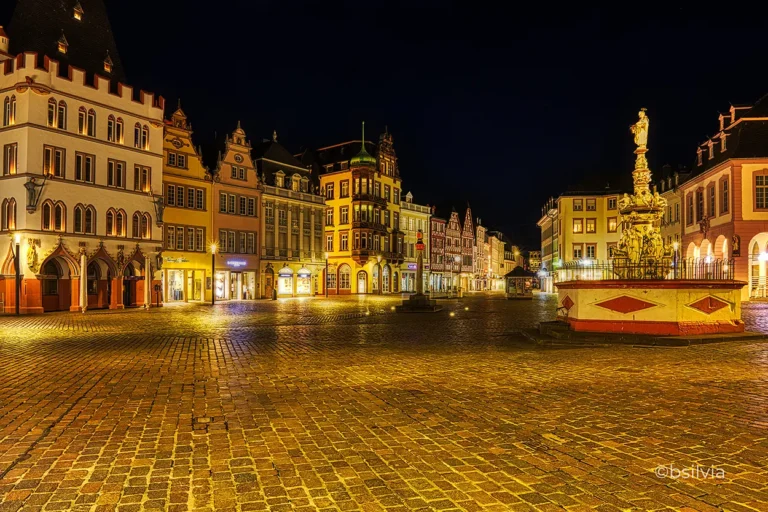Google AI claimed Trier is significantly larger than Brugge – but that’s not true. Brugge is actually bigger in area. As someone who lived in both cities, I explore why Trier feels larger: wide streets, tall buildings, and Roman grandeur. It may look like AI confused facts with feelings – but really, it just got the facts wrong.
Oh, it’s been two weeks already. Two weeks. And the last time I wrote I thought, “Now I’m going to write every day. Or every other day. Maybe two or three times a week.” Or something like that.
Everyone probably already knows, our dear Google launched a core update on June 30th. Everything that was suggested before is suggested again: create content that is useful, reliable, written in the first person singular… nothing new. The update will last 3 weeks, and when it’s over… who survives – will tell (that’s a saying in my native language).
Anyway. Today I was a little nostalgic about my life in Trier. Not because I miss Germany or the city itself, but because of how many years have passed…
So, I was thinking about how Trier is actually bigger than Brugge and then it occurred to me that the two cities are actually about the same size…. All in all, I typed into Google: Is Trier the same size as Brugge? And then… hmmm.
The AI Who Cried “Bigger!”
I was casually scrolling (as one does when procrastinating on 47 other things), when I saw it.
A statement from Google’s AI:
“Trier is significantly larger than Brugge.”
Wait, what now?
There it was – pure digital nonsense, confidently served like it was carved into a Roman column.

Then I shared my feedback, because I guess… I can help. I mean, if I’ve lived in both cities and AI is out there confidently spewing nonsense, why not step in? So, I tried again – searched for the same info. And guess what? This time, it came back correctly. Small victory. Maybe someone (or something) is listening after all.

I’ve Lived in Both, ha!
I lived in Trier (Wikipedia), Germany. And now I live in Brugge (Wikipedia), Belgium. That makes me one of the rare unicorns who can say:
“Yes, I’ve experienced both cities not just through tourist eyes – but through grocery runs, cold winters, and late evening photography strolls.”
So when I say Google AI is wrong, it’s not because I’m defending a Google Maps statistic – it’s because my feet, my lens, and my memory all disagree.
Trier: A City That Stretches and Soars
Let’s start with Trier. It’s the kind of place that’s been around since 16 BC (yes, you read that right), and it still carries itself like it ruled an empire yesterday.
- The buildings are tall. Not skyscraper-tall, but that confident German solid kind of tall.
- The streets are wide, even in the center, and they stretch out into suburban sprawls like a cat claiming every bit of sunbeam.
- You’ve got massive open squares, university blocks, and modern architecture peppered in between Roman ruins.
- And let’s not forget Porta Nigra, standing like a stone bouncer from another millennium.
The city feels big because it breathes big.

Brugge: A Postcard Come to Life
Now let’s hop over to Brugge.
It’s delicate. Intimate. Romantic.
It’s the city equivalent of an intricate lace doily – beautiful, detailed, and designed to charm, not overwhelm.
- The historic center is compact. You can walk across it before your coffee cools down.
- Buildings here are cute. Adorable, even. They lean with character but rarely look down on you.
- The streets are narrow, winding like a medieval puzzle.
- You don’t sprawl – you stroll.
Brugge feels like a place you whisper in, because shouting might scare the swans.

Why AI Got It Wrong
Okay, so technically Brugge has a larger area:
Brugge – 138.4 km²
Trier – 117.06 km²
But AI confused physical land area with urban experience. It’s like saying a wide meadow is “bigger” than a vertical skyscraper just because it covers more surface. That’s not how our senses work.
Trier feels bigger because:
- It’s more spread out.
- Its architecture dominates.
- It has longer distances between districts.
- Its history is carved in large, bold Roman letters.
Brugge, for all its magic, feels like a pop-up fairytale village. And that’s its charm.
But scale? That belongs to Trier.
How I Felt the Difference
In Trier, I’d walk 25 minutes to buy tofu. In Brugge, I bump into two chocoladewinkel (chocolate shop), a vintage lace shop, and three grocery stores all within 10 minutes of leaving my flat.
In Trier, everything felt “just a bit farther.”
In Brugge, everything feels “right around the corner – and photogenic while you wait.”
My camera noticed the difference, too. In Trier, I framed wide-angle Roman arches and distant university blocks. In Brugge, I capture narrow alleyways with overhanging windows and canals that shimmer like they were hand-painted.
Size Isn’t Everything… But Perception Is
So here’s the thing: Google AI may spit out numbers, but it doesn’t sip coffee on a foggy morning near Brugge’s Markt or walk past Trier’s Dom while dodging bicycles and history students.
It doesn’t know what it feels like to live somewhere – but I do.
Gentle AI Roast
So, dear AI: before you go declaring which city is “significantly larger,” maybe have a latte with someone who’s actually lived there. Or better yet – ask a photographer. We see what size means.
As for me?
I’ll take Brugge’s compact charm and gentle whispers any day.
But Trier? She’ll always be the bold, Roman-spirited city that made me walk farther and look up more.
Discover more from Graphics-Illustrations.Com
Subscribe to get the latest posts sent to your email.





